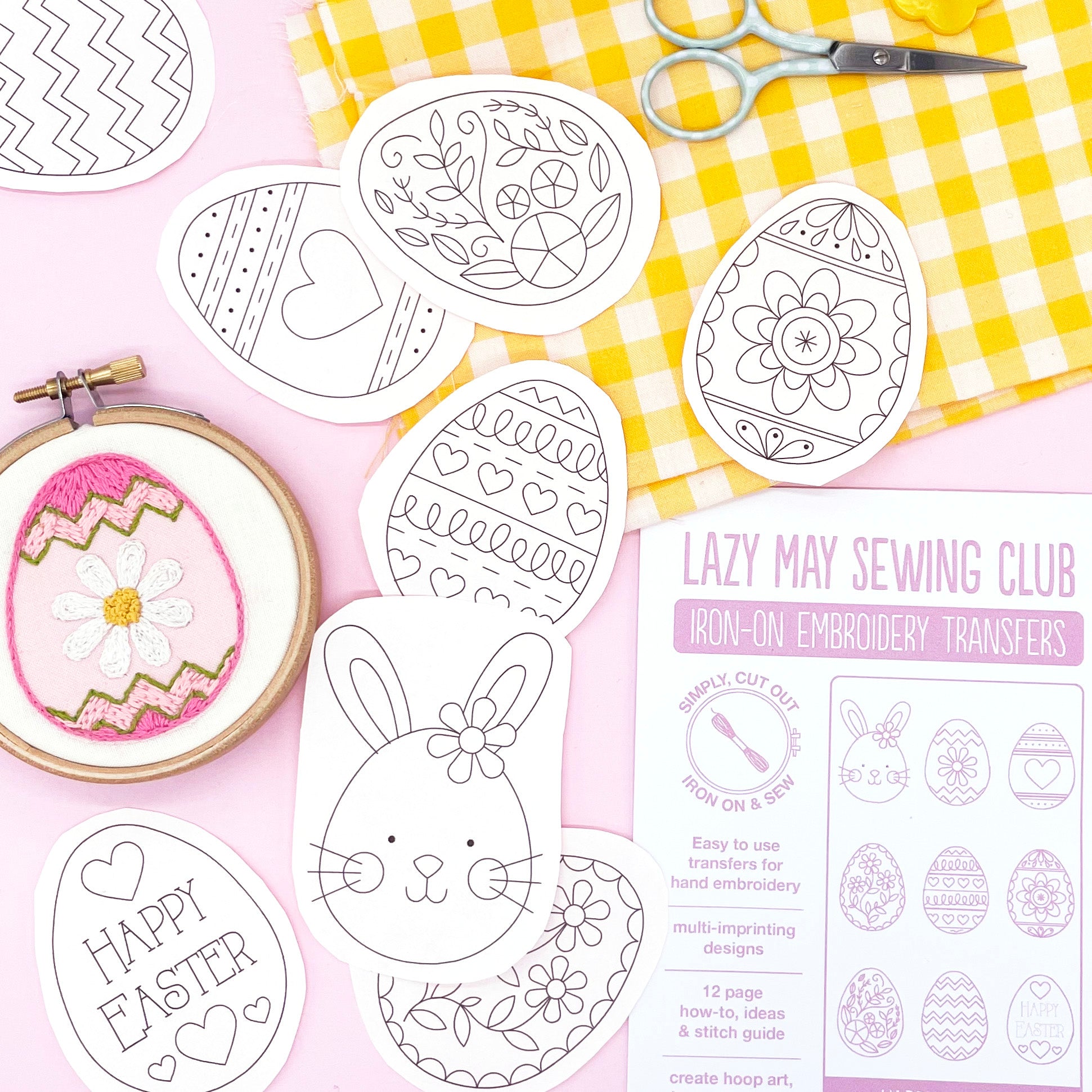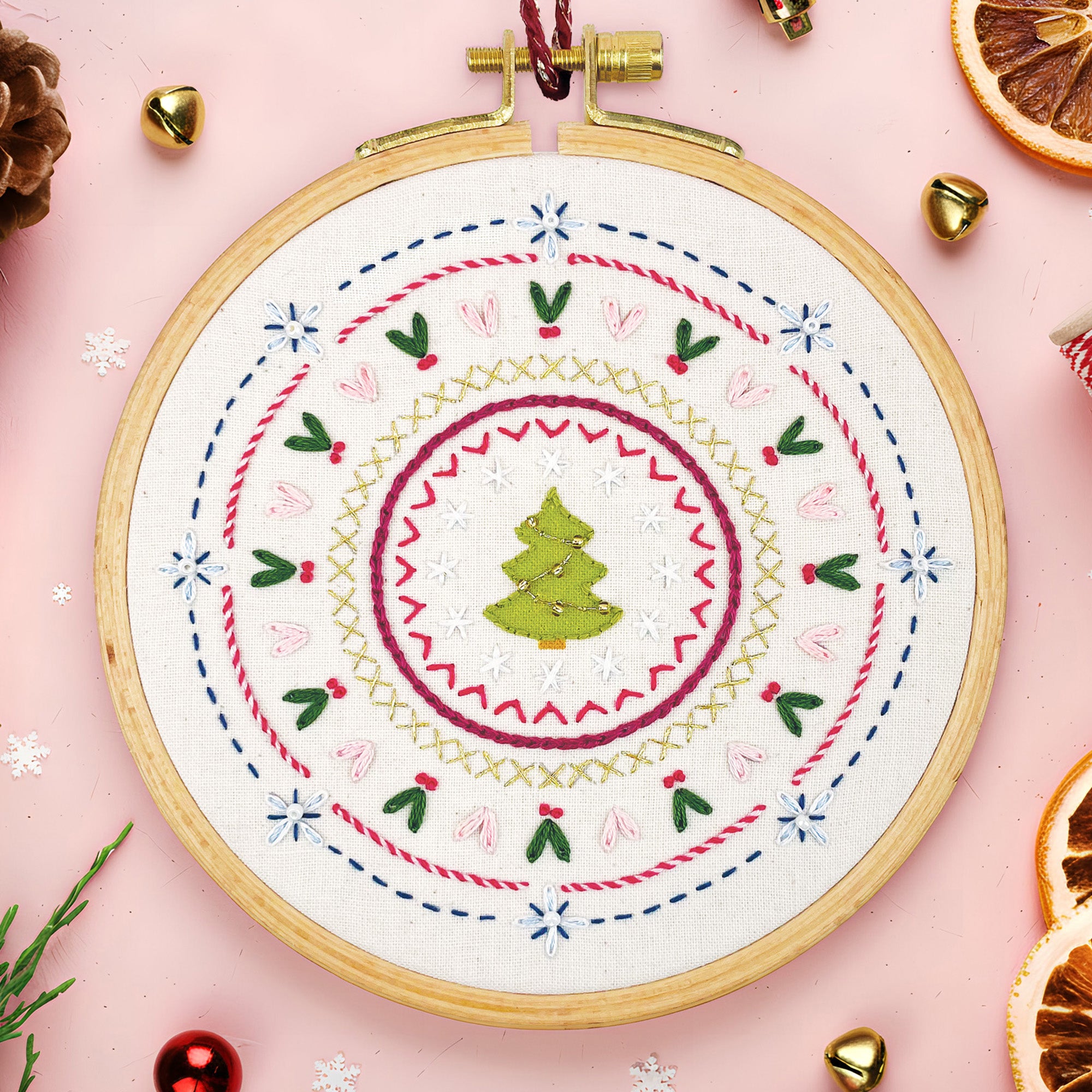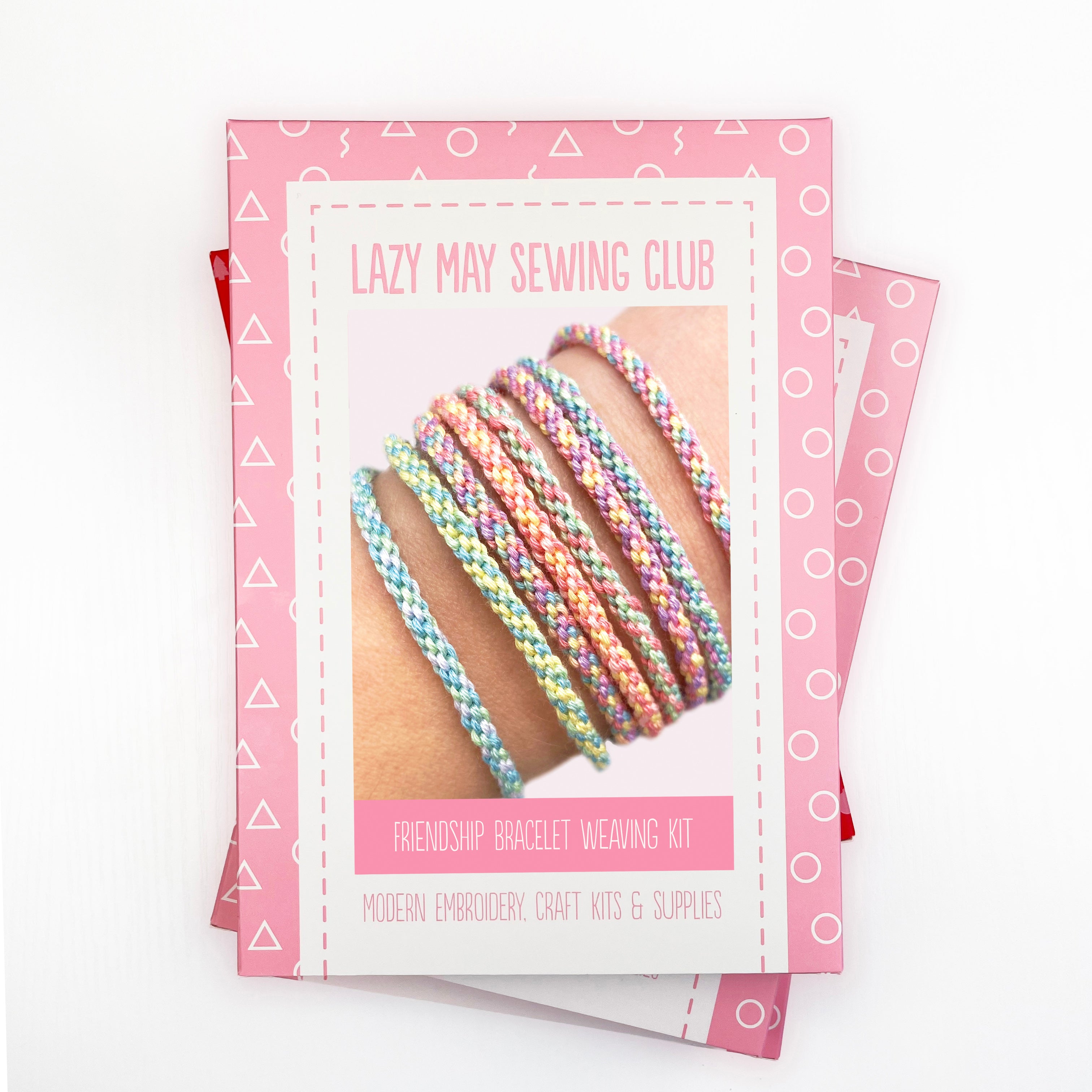How to transfer embroidery designs to fabric: 5 easy ways for beginner embroiderers
If you're just starting out with hand embroidery, one of the first things you'll need to know is how to get your design onto the fabric. Luckily, there are lots of simple ways to do it—whether you're stitching at the kitchen table or curled up on the sofa. Here's a look at five easy embroidery transfer methods, perfect for beginners.
1. Iron-on embroidery transfers

This is one of the quickest and easiest ways to transfer a design to fabric—ideal if you’re just getting started. Simply place the printed transfer face down on your fabric, press with a hot, dry iron, and your design will appear like magic, ready to stitch.
Great for: cottons, linens, and light-coloured fabrics.
Top tip: Always test the transfer on a scrap first to check the placement and heat setting.
Shop Iron-On Embroidery Transfers Here
2. Tracing using an tablet

If you have a iPad or tablet, you can use it to trace your design straight onto fabric. Place your design on the screen, tape your fabric over the top, and carefully trace using a heat-erasable embroidery pen* fine fabric marker or even a soft pencil.
Great for: white or pale fabrics that aren't too thick.
Top tip: Make sure your screen brightness is turned up high, and tape everything down to stop it shifting while you trace.
*Heat erasable pens are brilliant for tracing designs as they disappear when you apply heat (with an iron or even a hairdryer). Pair them with any tracing methods here and you’ll have crisp, clean lines to stitch over—and none left behind once you’re done.
They are great for neat outlines and easy removal after stitching. Remember to test your pen on a scrap first—some colours can leave a slight mark on certain fabrics.
3. Window tracing method

No lightbox? No problem! Tape your design to a sunny window and place your fabric over the top. The light from outside will help you see the lines clearly so you can trace them with a heat-erasable embroidery pen, fine fabric marker or even a soft pencil.
Great for: light coloured or thin fabrics.
Top tip: Go for a bright day if you can, and don’t forget to tape down both the paper and fabric to keep everything steady.
4. Stick and stitch embroidery patterns

Stick and stitch patterns are pre-printed designs on water-soluble fabric. Just peel off the backing, stick it onto your fabric, and stitch straight through the top layer. When you're done, rinse it away with warm water—no tracing required.
Great for: darker fabrics, denim, or tricky surfaces like clothing and bags.
Top tip: Once your fabric is dry, if you feel it needs an iron, place it between two towels first. This will ensure the stitches don't get flattened.
Shop Stick and Stitch Patterns
Which transfer method is best for you?
It all depends on your fabric, tools, and personal preference. If you're using a light-coloured fabric and want to keep things simple, an iron-on transfer or window tracing might be perfect. If you're working on something dark or textured, try a stick and stitch pattern. And if you're like me, you'll probably end up using a bit of everything depending on the project!
Looking for beginner-friendly embroidery patterns and transfers? Browse our full range of kits and designs at Lazy May Sewing Club - everything you need to start stitching is right here.





